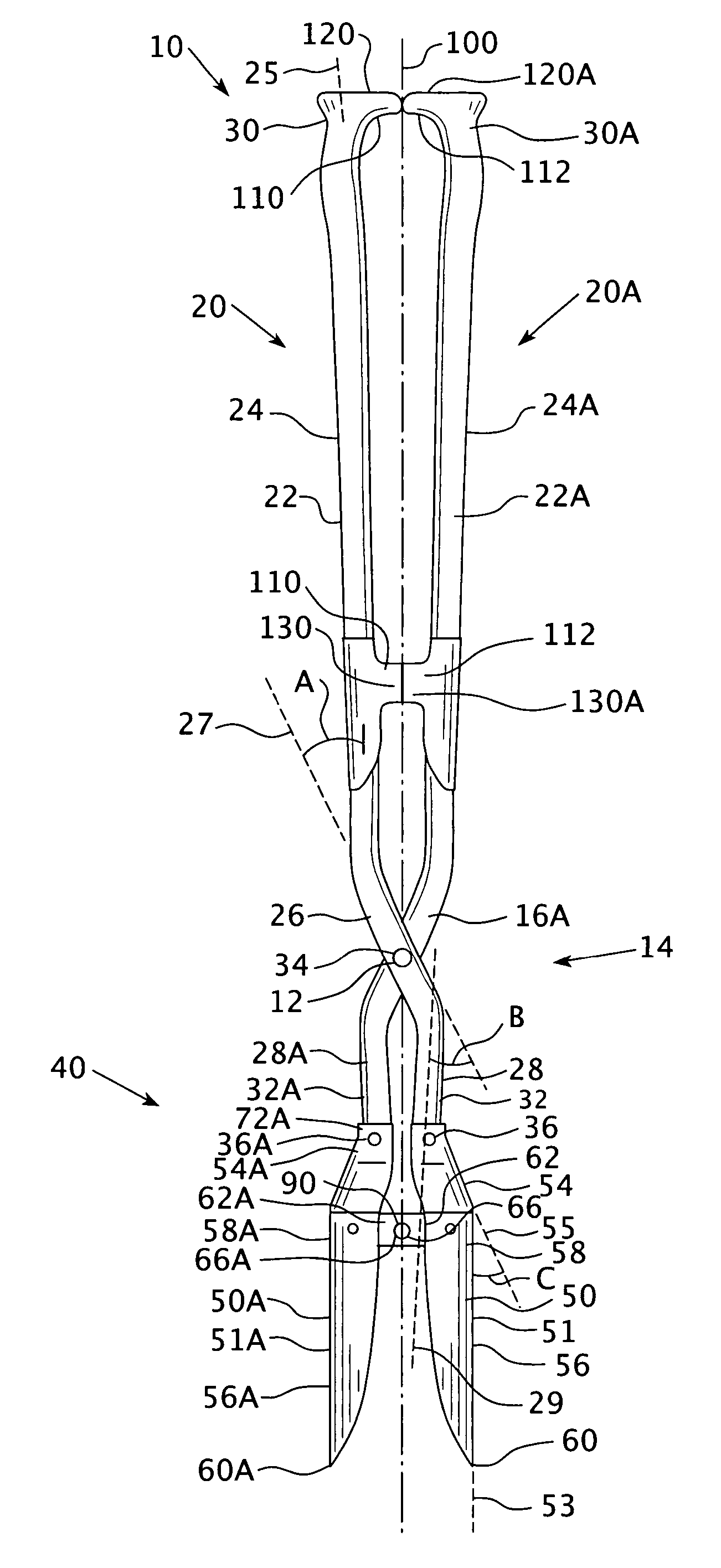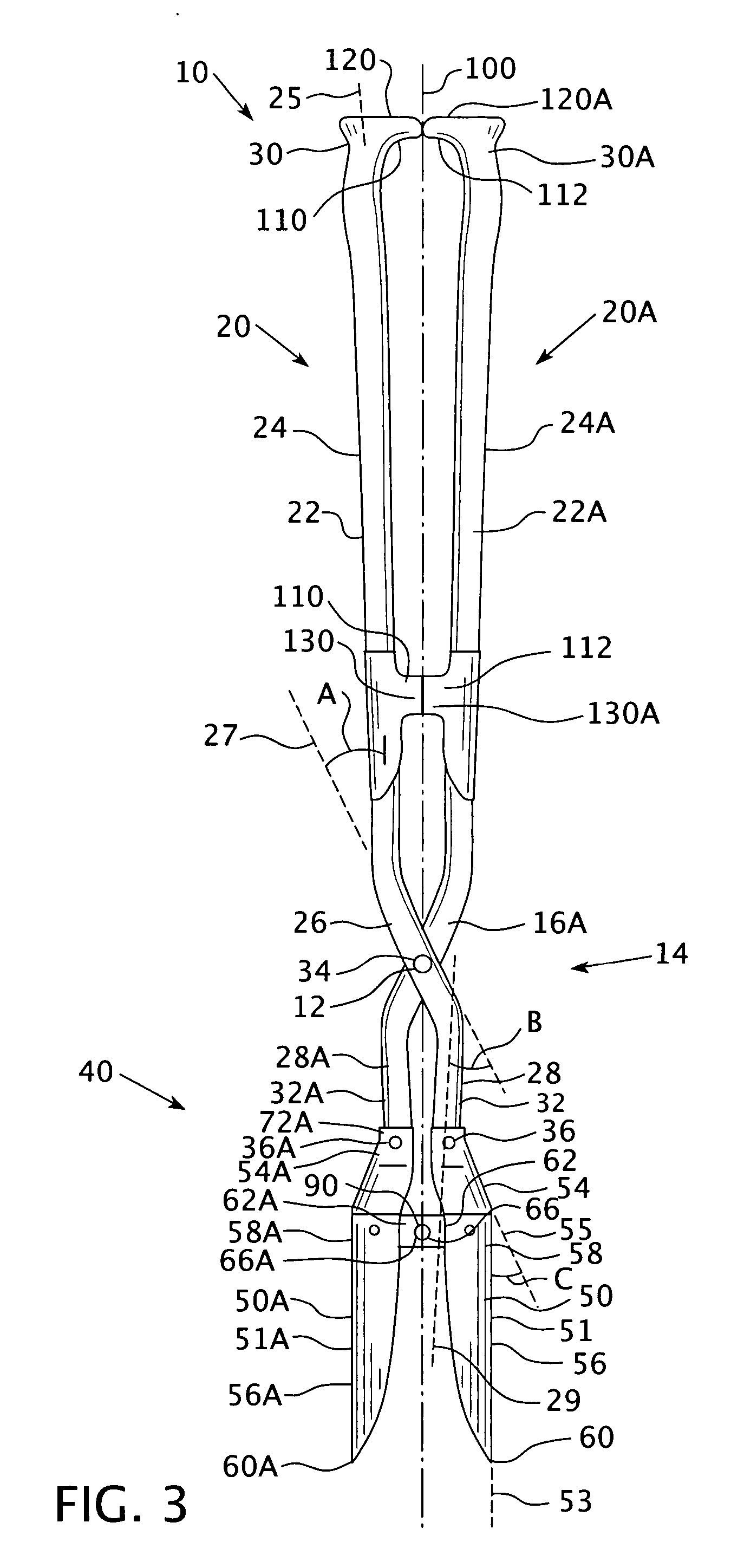Consumer post hole digger
a post hole digger and consumer technology, applied in the direction of instruments, optical elements, transportation and packaging, etc., can solve the problems of not being able to move the handle for a moderately deep hole, requiring a greater effort on the part of the worker, and the length of the handle may not be too long
- Summary
- Abstract
- Description
- Claims
- Application Information
AI Technical Summary
Benefits of technology
Problems solved by technology
Method used
Image
Examples
Embodiment Construction
[0026] As used herein an “offset pivot point” shall mean a configuration wherein each handle and associated blade may be, and generally are, disposed on the same side of the pivot point, the pivot point being located on one or more structures extending toward the opposing handle / blade.
[0027] As used herein a “traverse pivot point” shall mean a scissor-like configuration wherein two members cross over each other with the pivot point extending through the point of intersection.
[0028] As used herein, “coupled” means a link between two or more elements, whether direct or indirect, so long as a link occurs.
[0029] As used herein, “directly coupled” means that two elements are directly in contact with each other.
[0030] As used herein directional words, such as, but not limited to, “upper” and “lower” shall be used in relation to the Figures and are not limiting upon the claims.
[0031] As shown in FIGS. 3 and 4, a post hole digger 10 includes a first handle assembly 20, a second handle ...
PUM
 Login to View More
Login to View More Abstract
Description
Claims
Application Information
 Login to View More
Login to View More - R&D
- Intellectual Property
- Life Sciences
- Materials
- Tech Scout
- Unparalleled Data Quality
- Higher Quality Content
- 60% Fewer Hallucinations
Browse by: Latest US Patents, China's latest patents, Technical Efficacy Thesaurus, Application Domain, Technology Topic, Popular Technical Reports.
© 2025 PatSnap. All rights reserved.Legal|Privacy policy|Modern Slavery Act Transparency Statement|Sitemap|About US| Contact US: help@patsnap.com



